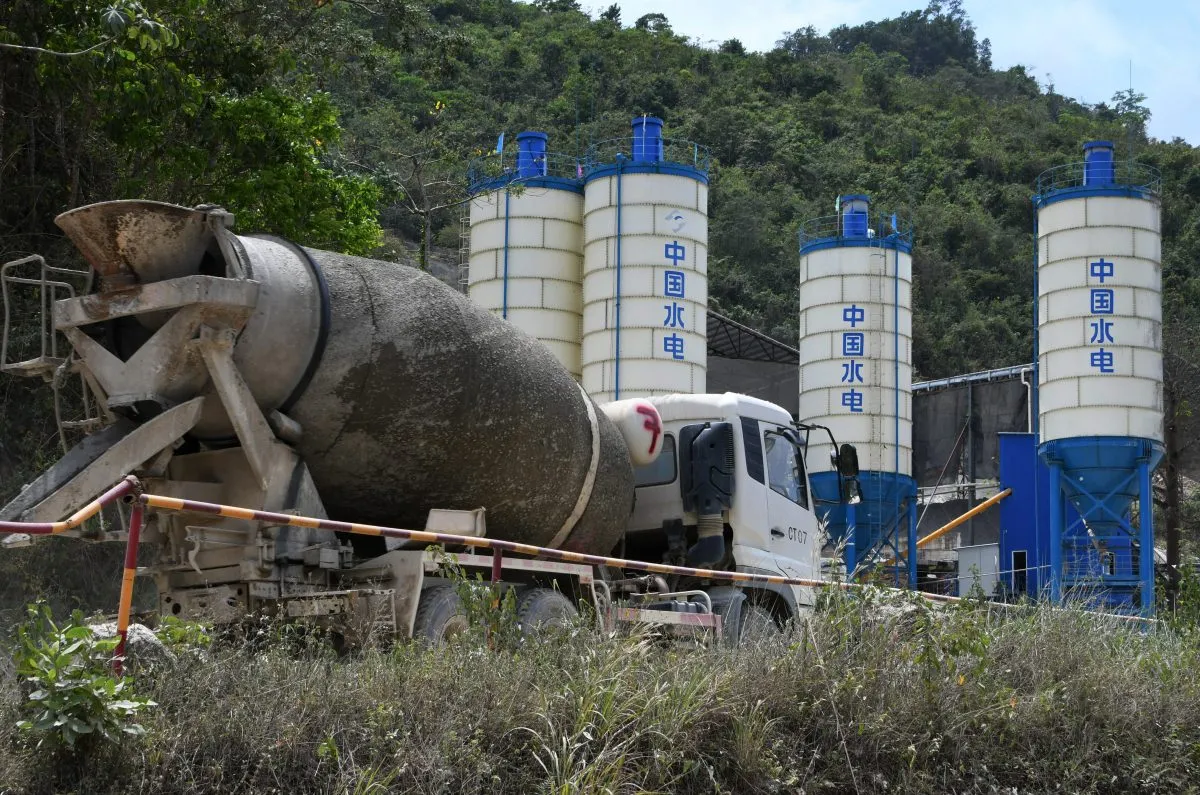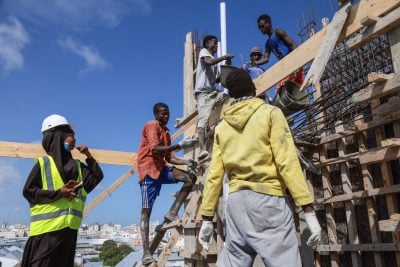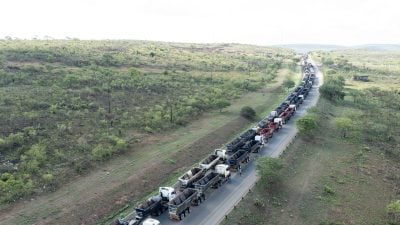The rise in Chinese cement factories across Africa is an indisputable trend. In 2023, we tracked nine new Chinese-invested cement projects in Africa, and another five in 2024 so far.
The divergence between China’s and Africa’s economic conditions are driving this surge in cement investments. Domestically, the Chinese property market remains stagnant, with consumption of cement at 60 million tonnes per year against a production capacity of 130 million tonnes. This imbalance increases bankruptcy risks for producers without strong export markets. Stringent environmental policies in China further discourage local cement production, incentivizing firms to relocate operations abroad.
The overall result is Chinese firms are actively seeking high-margin opportunities abroad. Africa’s growing demand for infrastructure aligns perfectly with this need.
While China’s domestic cement prices fell to $41/ton in 2023, Africa’s rose to $111/ton in key markets like Ethiopia and DRC.
Moreover, by some estimates, Africa’s cement market is projected to grow from approximately $35bn in 2024 to around $42bn by 2030, with a compound annual growth rate (CAGR) of 4.7% during this period. By contrast, China’s share of global cement production is expected to decrease from over 50% in the early 2020s to about 35% by 2030.
The growth in cement needs is due to a continuing construction boom on the continent – fuelled by rapid urbanisation, population growth, and infrastructure gaps. Countries like Ethiopia, Mozambique, and Rwanda are experiencing significant demand for cement to support roads, bridges, and housing developments. These trends align with broader objectives under the African Union’s Agenda 2063, which emphasizes industrialisation and large cross-border infrastructure projects.
The major Chinese players
West China Cement Limited is among the leading players, with operations in Ethiopia, Mozambique, the DRC, and Rwanda. In Ethiopia, WCC’s $600m Lemi National Cement Factory, the largest in the country, produces 15,000 tonnes of cement daily, meeting half of the country’s demand. Jointly developed by WCC and East African Holding in a Building Materials Industrial Park, it started production in September 2024 and exemplifies large-scale Chinese investments in this field.
In Rwanda, the Anjia Cement Factory, a $50m investment by West International Holdings, demonstrates the potential of smaller-scale projects even in relatively smaller markets. This plant contributes to Rwanda’s self-sufficiency in cement production while creating over 1,000 local jobs. Sinoma International Engineering and Huaxin Cement are also expanding across the continent, with investments in Tanzania, Zambia, South Africa, and Mozambique.
These companies benefit from strong policy support under China’s Belt and Road Initiative (BRI) and FOCAC-related funds. For instance, South Africa’s 2014 1Mta Mamba Cement plant is jointly owned by Jidong Development Group (60%) and China-Africa Development Fund (CAD Fund) (40%) and mostly serves the domestic market. Key provinces in China where cement operators willing to go overseas can be found include Shaanxi, Xinjiang, and Guizhou. In March 2024, WCC’s Chairman, Zhang Jimin, said, its African operation was the “major contributor of profits to the overall business last year”.
Sustainability and scale concerns
Despite its benefits, the surge in Chinese cement factories presents several challenges. Environmental sustainability is a concern, and overreliance on Chinese investments for cement production could threaten the stability and development of Africa’s domestic industries amid its struggling economy. Addressing these challenges requires careful policy planning, coordination.
That said, although Africa is making significant strides as a global cement producer, it still far lags behind China’s scale. For example, Africa’s largest cement producer, Dangote Cement, has a total annual production capacity of 52 million tonnes from various location across the continent. In comparison, China’s largest cement producer, China National Building Material Co. Ltd. (CNBM), has a total capacity over ten times this – of 530 million tons per year.
With almost four times the land of China and only 4% of the world’s infrastructure at this time, there is a strong business case in principle for African cement producers in regional hubs such as Nigeria to be at least as large as those in China.
The fact is, Africa’s infrastructure needs and ambitions are not matched by available, low cost finance, and this in turn, dampens the cement market. It is therefore primarily commercial opportunities such as real estate development for the upper and middle-classes that can go ahead without impediment.
So while the data reveals that Chinese cement producers do see the African opportunity – more so than many other foreign investors who neither have the experience of rapid urbanisation and infrastructure development – this engagement is still constrained, lower than it should be, especially from a developmental perspective.
Cementing the opportunity
So what next to cement this opportunity ?
There are two key next steps – the first aimed at immediate outcomes and the other at medium-term outcomes.
First, there is no doubt that Chinese cement producers will continue to look for both greenfield and brownfield investment opportunities in Africa. African governments should promote their countries – especially special economic zones – as investment destinations directly to large cement firms in China. However, to maximize the benefits of these investments, Chinese companies should prioritise sustainable production practices to mitigate reputational risks and also be in line with Chinese commitments for a greener Africa-China future. Plants leveraging Chinese technology have already helped China’s domestic cement production become more sustainable, including sometimes with more than 50% lower emissions.
Second, African governments, African and Chinese financial institutions can work together to unlock Africa’s infrastructure demand – especially for large cross-border infrastructure. On the African side, financial institutions such as AfDB, Afreximbank AFC and Shelter Afrique are at the forefront of either directly financing cement plants or financing infrastructure that will lead to increased cement demand. On the Chinese side, China Eximbank, CADFUND, CAFIC, Silk Road Fund, CDB, as well as china-based multilateral institutions NDB and AIIB can all play a part. The latter in particular have an opportunity to innovate financing for regional infrastructure development to further support initiatives like the AfCFTA and the AUs Agenda 2063.
Overall, the data reveals a fact we at DR often see in Africa-China relations – the win-win economic equation that growing African markets often present for Chinese firms. However, ensuring the balance of win-win falls largely on the African side and creates the opportunity for millions of Africans to lift themselves out of poverty – as large infrastructure does – is our concern. When it comes to cement, our view is that doing so will require intentionality and innovation. But it’s possible – China itself demonstrates the potential.
Want to continue reading? Subscribe today.
You've read all your free articles for this month! Subscribe now to enjoy full access to our content.
Digital Monthly
£8.00 / month
Receive full unlimited access to our articles, opinions, podcasts and more.
Digital Yearly
£70.00 / year
Our best value offer - save £26 and gain access to all of our digital content for an entire year!

 Sign in with Google
Sign in with Google 



